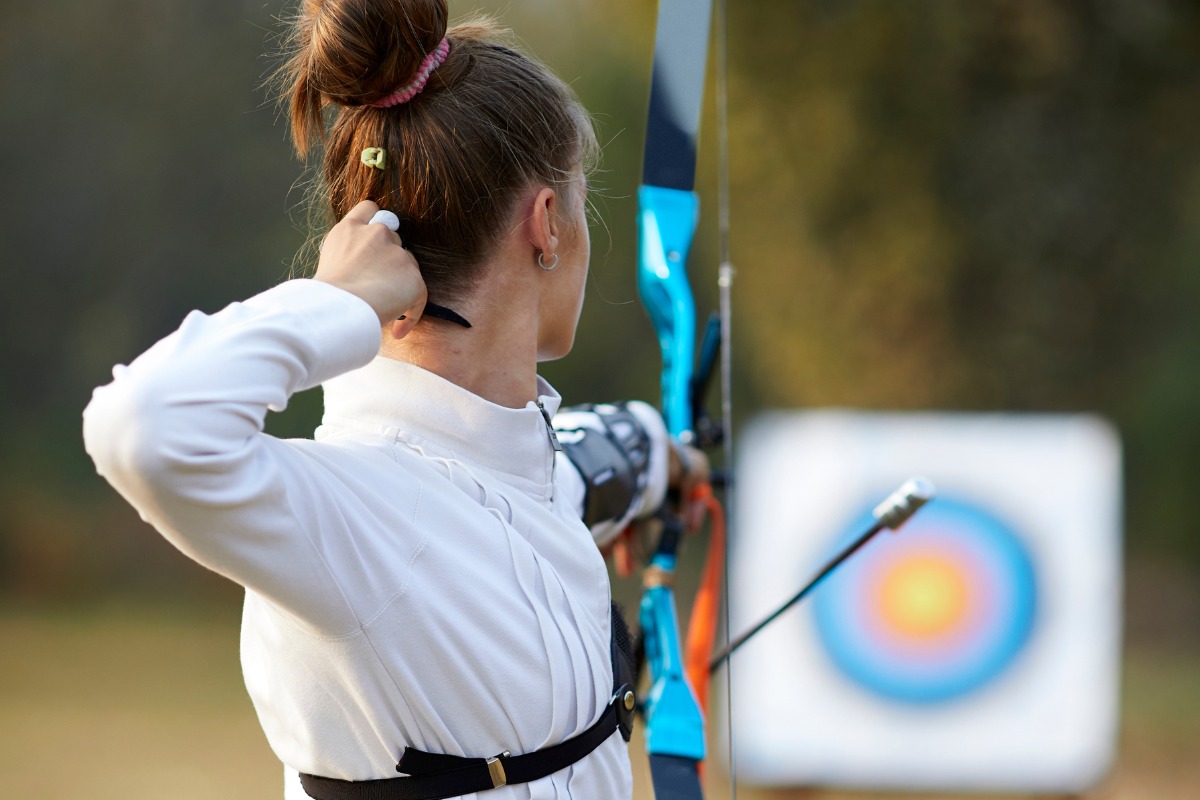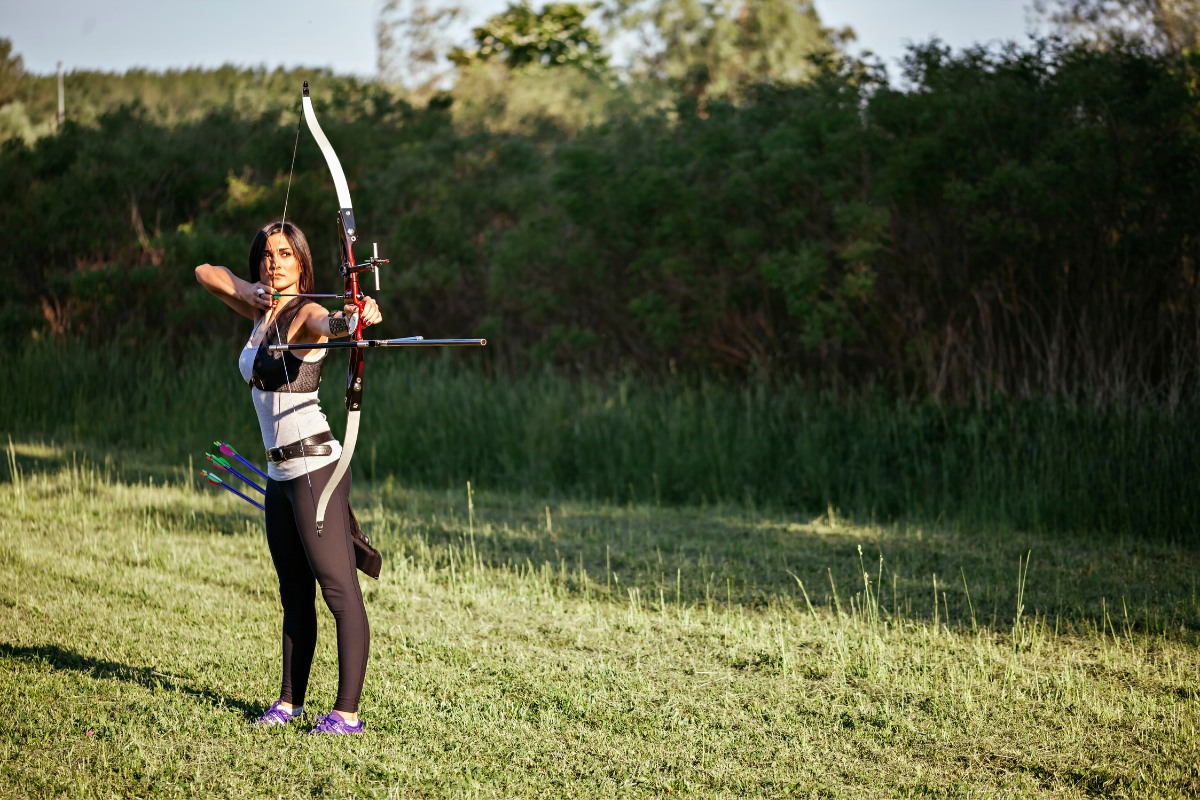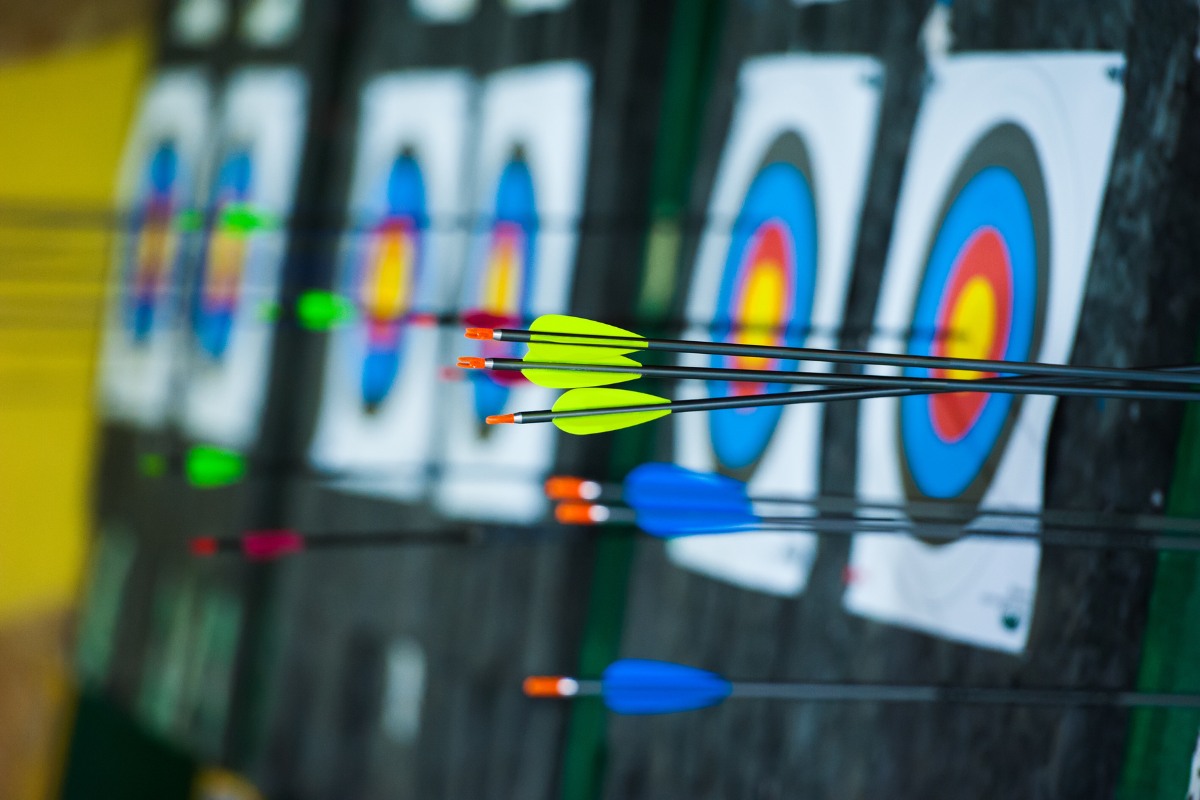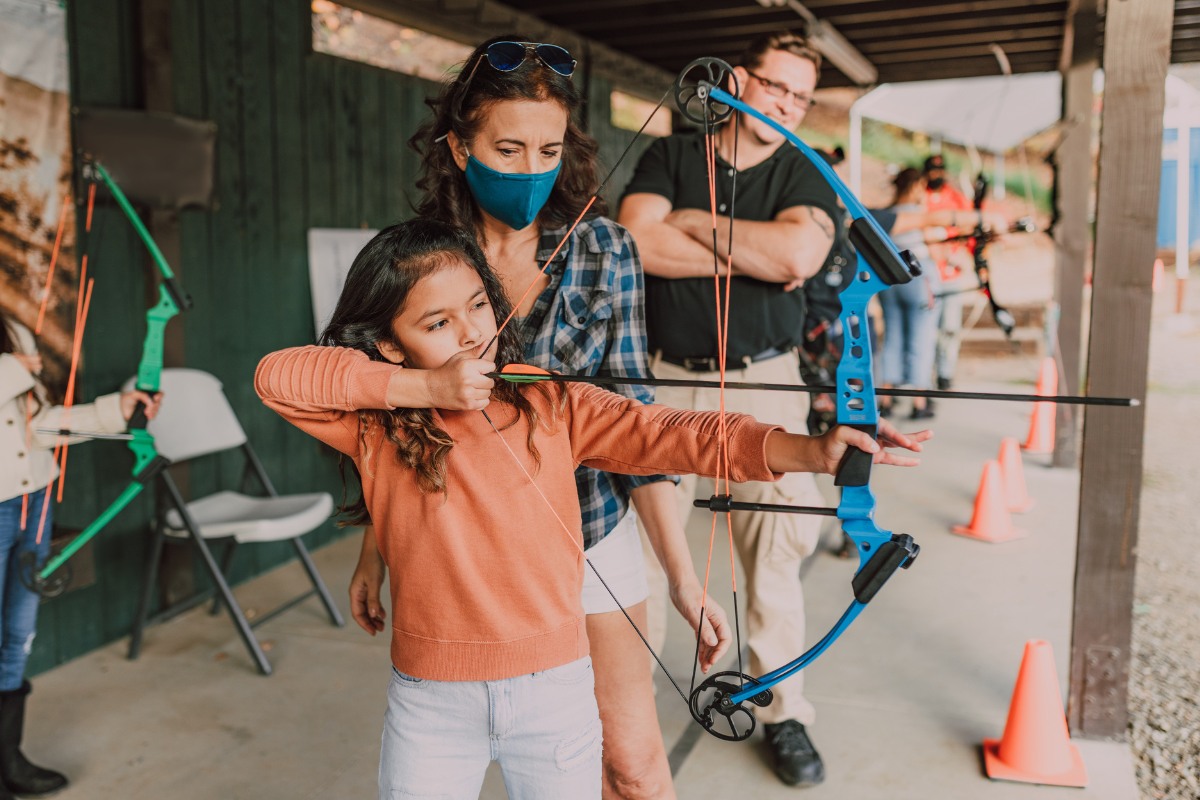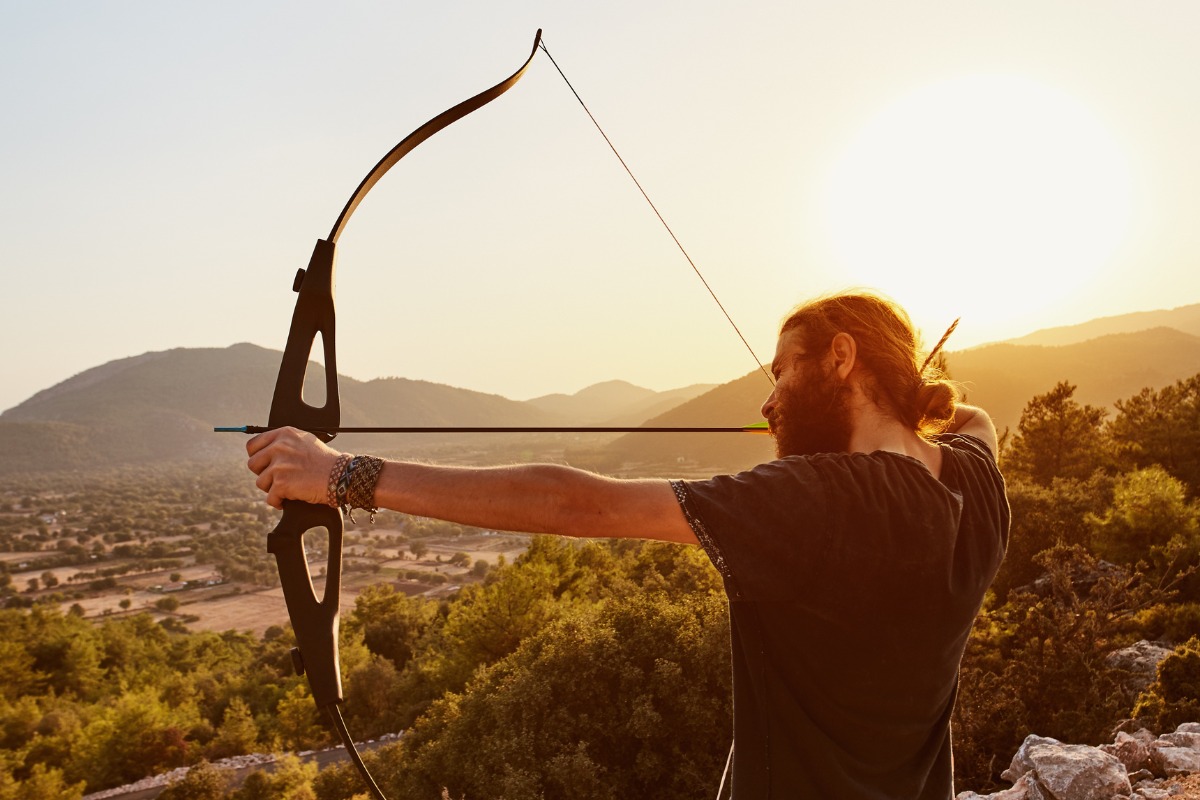You pivot your legs into your shooting stance. You hold the bow at your “sweet spot” and nock the arrow. You hook your release aid and smoothly draw to the full position. The string is pressed against your nose, and your sight is perfectly aligned. Now it is time to aim.
The bow feels heavy all of a sudden, and it becomes impossible to align your sight to the target. You try and try but have no luck. Instead, you lose control of your movements, and just as the sight crosses the gold, you punch the trigger, sending your arrow too far left.
Does this condition ring any bells? Have you ever flinched or lost control right before taking that very important shot? You are not alone. Many competitive, as well as recreational, archers are battling what is known as target panic.
What Is Target Panic
Target panic is a psychological and maybe even a neurological condition that affects an archer’s ability to shoot. Originally, it was referred to as “gold panic” because the symptoms manifested when the archer was aiming at the gold (bull’s eye) circle, but it evolved into “target panic” because it could happen when the archer is aiming at any target. It is similar to flinching before shooting a gun.
When most people get to the point where they can’t shoot properly anymore due to target panic, they become uncertain about everything. Some of them become embarrassed and remain in denial for a long time or try to solve it themselves without help from others, even professionals. It has caused many people to quit archery altogether, especially beginners, thinking it is not the sport for them.
For this reason, as archers, it is important to acknowledge the existence of such a condition so that even if we aren’t affected at the moment, we can minimize and possibly eliminate the chances of coming down with full-blown target panic. This guide educates on everything target panic and how to get rid of it. But first, how would you know if you are experiencing target panic?
Symptoms of Target Panic
Target panic manifests in the following ways:
Drive-by Shooting
In a drive-by shooting, the archer moves the sight through the target, and instead of holding it at the center of the target, they punch the trigger as the sight goes by the center.
Punching the Trigger
This is similar to jerking the trigger in guns. It happens when the archer quickly releases instead of gently squeezing through the release.
Premature Anchor
Premature anchor is experienced when the archer freezes above or below the target. The bow seems heavy, and they cannot come to a full anchor position. They usually freeze below the target.
Premature Hold
This is where the archer hits a wall. They can’t seem to align their sight or bow with the target.
Premature Release
Premature release is characterized by the inability to bring the pin to the center of the target before releasing.
Double Clutching the Bow
The archer’s body reacts as if they have already made the shot before it is actually fired.
What Causes Target Panic
It would be wonderful if we truly understood what causes target panic. Unfortunately, there hasn’t been any scientific conclusion, so there are a lot of varying theories on its causes. Some look at it from a neurological standpoint, others psychological, and others physical as below.
Self-Preservation
According to Joel Turner, everybody is born with target panic in them as a form of self-preservation. Self-preservation is the natural response of the body and mind to “brace for impact.” When we trip, we normally catch and brace ourselves before we hit the ground. Similarly, when you make a loud banging noise in the presence of an infant, their hands involuntarily go up, eyes close, and the head goes down. It is the response of the mind to the knowledge of an impending phenomenon.
If there was a way of telling of any impending “explosions,” the mind would never be caught by surprise. Instead, it would get ready for it even before it happens. This is target panic.
Due to repeating the same movements over and over, the mind knows that getting to a full draw or pointing at the spot is followed by the explosion of releasing the arrow. And so when you bring your sight close to the center at full draw, you unwillingly punch the trigger or your hand relaxes and releases the arrow. The mind is trying to determine when the explosion will occur to properly brace you for the impact. We often see archers with traditional bows stop their draw a couple of inches from their face and lock up. The draw weight quadruples, and when the mind is just about ready for the incoming explosion, the archer reaches full draw and releases the arrow immediately, missing the shot.
Because the “trigger pressing motor function” of the brain and the “recoil bracing motor function” are linked, the latter happens before the former, ruining the shot due to the muscle contractions. This effect is similar to that of shooting firearms. However, in archery, it is heightened because the body is tense, and only the tension is preventing the explosion from happening.
Anxiety
There is a level of anxiety that permeates every shot process, probably. There are probably as many reasons for the anxiety as there are archers, but the reason why some anxiety attacks escalate to target panic and others don’t is still a mystery. It is typically heightened the moment just before releasing. Generally, the more important the shot, the more the anxiety. Extreme levels cause target panic by causing the mind to “short circuit” at an important moment.
Draw Weight
The heavier the bow, the worse the target panic. It is much harder to control a heavier bow and also much easier to damage arrows.
Size of the Target
The smaller the target, the worse the target panic.
Distance
The further away from the target you shoot from, the worse the target panic.
How to Get Rid of Target Panic
Before anything, it is important to note that some of the recommended processes require you to put in time and effort. You may be tempted to quit midway and go back to your usual shooting, but to get over it, you must be committed and do whatever it takes.
Blind Bailing
This is one of the best target panic solutions and focuses on retraining your muscles to shoot consistently. In the blind bailing archery drill, you need your bow and arrow, and a bale-style target. Place the target at a distance about twice your arrow length. This is to ensure you do not miss while at the same time giving your arrows room to leave the bow.
Take your proper archery stance, close your eyes, and draw. Focus on your form and release it gently and follow through. Do not concentrate on where your arrows are going. Closing your eyes removes your focus from aiming to drawing, form, and releasing. After blind bailing for a while, your muscles will be retrained and your target panic gone.
Changing Your Release
Most of the archers experiencing target panic use an index finger release. Not to say there is anything wrong with it because it is actually quite practical, especially for hunting, but to deal with target panic issues, it is advisable to try release aids that are specifically designed to aid in recovery. The hinge release, for instance, does away with the ability to punch the trigger. It only releases the string when the archer rotates it to a preset point.
Keep in mind that releases have a profound effect on your shots, so you should test them or speak with experts to find the ideal one for you.
Changing Your Form
Sometimes, target panic may be caused by your shooting form, so you can cure it by merely changing it. For beginners, it is not difficult as chances are, their form hasn’t taken root completely. Seasoned archers have a harder time as their form is well defined by years of shooting. The best way to “rewrite” your form is to practice without an arrow as encouraged by world champion archer Levi Morgan.
You go through all the steps of taking a shot but don’t place an arrow. Instead of releasing the string, you release it gently back to the rest position. In about two weeks of this, you will have broken the habit of anticipating shots.
Reduce Draw Weight
Many archers have significantly reduced the effects of their target panic by merely reducing their draw weight.
Related Questions
Do Olympic-Level Archers Experience It
Yes, they do. As it is a natural response, no one is excluded from it. It is estimated that as many as 90% of archers experience it at some point, so if you shoot long enough, there is a high chance it will catch up to you. It doesn’t matter how skilled you are.
Can I Completely Get Rid of Target Panic
No, you can’t. Target panic is deeply engraved in us and is part of human nature. Since the source of this condition is part of our nature, it doesn’t really disappear regardless of how many arrows you shoot into a blank bale with your eyes closed. All the practices, including using special releases and working on your form, help you to get over the symptoms and suppress it. It can easily reappear when you go back to the same bad practices or switch to a new style.
Final Thoughts
There is a playful claim that “…target panic is caused by people talking about targets and target panic!…” With the above steps, not only will you eliminate/prevent the effects of target panic, but you also won’t have to read or talk about it anymore.
